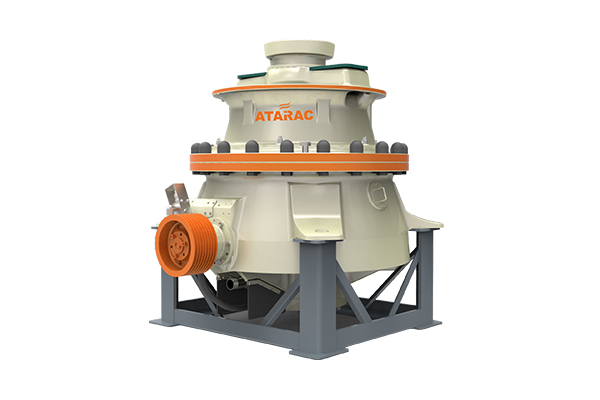Cone Crusher
Cone Crusher
A Cone Crusher is a secondary or tertiary crushing machine widely used in mining, construction, quarrying, and recycling industries. It is designed to break hard and abrasive materials into smaller, more uniform sizes by compressing the material between a rotating mantle and a stationary concave.

Advantages of a Cone Crusher
- High Crushing Efficiency – Produces finer, uniform-sized materials.
- Better Particle Shape – Reduces flaky or elongated particles for better quality aggregates.
- Adjustable Output Size – This can be easily modified to produce different material sizes.
- Less Wear & Tear – Mantle and concave wear are slower compared to jaw crushers.
- Continuous & Automated Operation – Suitable for large-scale production.
- Handles Hard & Abrasive Materials – Effective for crushing granite, basalt, quartz, and ores.
- Energy-Efficient – Lower energy consumption compared to jaw crushers for similar output.
Applications of a Cone Crusher
🔹 Mining & Quarrying
- Used in secondary and tertiary crushing stages to refine materials further.
- Essential for processing hard and medium-hard rocks, iron ore, copper ore, and limestone.
🔹 Construction & Road Building
- Produces high-quality aggregates for concrete, asphalt, and railway ballast.
- Ideal for shaping gravel and sand used in infrastructure projects.
🔹 Metallurgy & Chemical Industry
- Used for crushing metal ores and mineral-based raw materials.
- Helps refine raw materials before further chemical or industrial processing.
🔹 Recycling Industry
- Breaks down construction waste, glass, ceramics, and asphalt for reuse.
- Reduces environmental impact by processing demolition debris into usable materials.
Working Principle of a Cone Crusher
A Cone Crusher works on the principle of compression crushing, where the material is squeezed between a moving piece (mantle) and a stationary piece (concave).
Crushing Process
- Material is fed into the top of the cone crusher through the feed opening.
- The eccentric shaft rotates, causing the mantle to move in a circular motion.
- The mantle moves closer to and away from the concave, compressing and crushing the material.
- The crushed material exits through the bottom opening as smaller, uniform-sized particles.
- The output size can be adjusted by changing the gap between the mantle and the concave.
🔹 Types of Cone Crushers:
Spring Cone Crusher – Uses coil springs to control the gap and protect the crusher from uncrushable materials.
Hydraulic Cone Crusher – Uses hydraulic cylinders for gap adjustment and overload protection.
Compound Cone Crusher – Combines features of both spring and hydraulic cone crushers.
Get your product
Come & contact us today!
